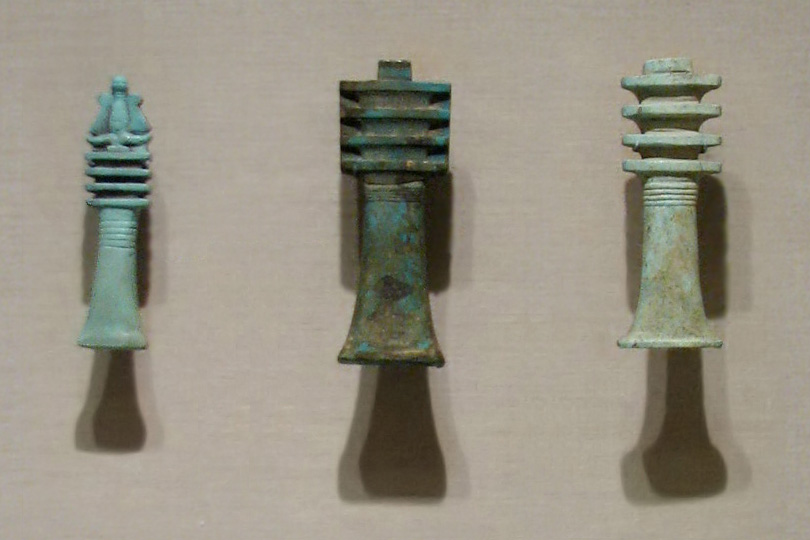
Faience Djed-Pillars
Late Period-Macedonian Period, ca. 664-305 B.C.E.
All: Brooklyn Museum, Charles Edwin Wilbour Fund
 Faience Djed-Pillars Late Period-Macedonian Period, ca. 664-305 B.C.E. All: Brooklyn Museum, Charles Edwin Wilbour Fund |
|
Left: Djed Column Surmounted by Atef Crown 3 7/8 x 1 in. (9.8 x 2.5 cm), 08.480.130, from Saqqara, Egypt |
Middle: Gilded Djed-pillar 4 1/2 x 1 5/8 x 1/2 in. (11.5 x 4.1 x 1.2 cm) 37.1230Em, Provenance not known |
Right: Djed Pillar as Amulet 4 1/8 x 1 7/16 in. (10.5 x 3.7 cm) 08.480.94, Provenance not known |
|
From _Art for Eternity_, Fazzini, Romano and Cody, page 157 djed-pillar "An Egyptian hieroglyph, probably a manifestation of part of the spinal cord, that was a written form of the word for 'stability'. It was a commonly employed symbol in religious iconography."
 From _Reading Egyptian Art_, Wilkinson
As an amulet, the djed was more likely to be used for funerary purposes, "to assure stability for the deceased." It was "common for a string of about a dozen pillars to be placed across the belly of the mummy, just opposite the lower vertebrae. "(_Ancient Egyptian Magic_), Bob Brier, page 154)
On my visit to the Brooklyn Museum in 2012, I captured another djed amulet:
These are three djed pillar amulets and one tyet at the Metropolitan Museum:
|


